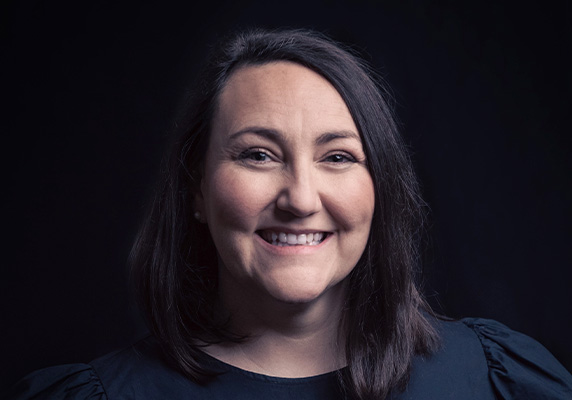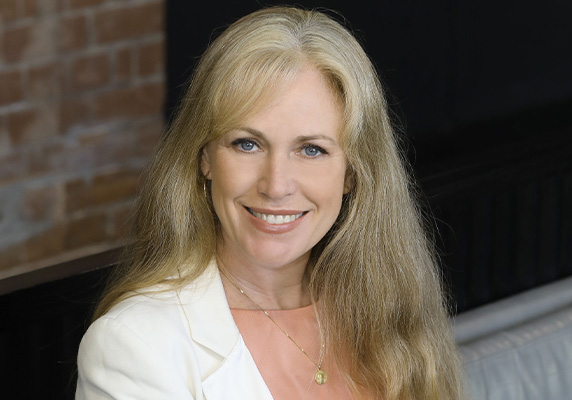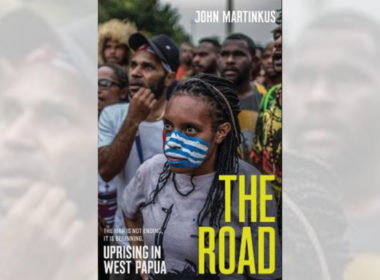Child influencers are gaining commercial power through promoting brands and services on their own or their family’s social media channels, but regulation to protect their rights and their income lags far behind.
In an increasingly digitised advertising world, child influencers are gaining commercial power through promoting brands and services on their own or their family’s social media channels.
Child influencers are the popular online personalities featured in social media content – usually with their parents – promoting products such as toys, fashion and holidays. As with adult influencers, the benefit may be free products and services in return for promoting brands online, but, depending on their popularity, they may also be earning thousands of dollars per post. Some child influencers are reportedly earning millions per year from videos on YouTube and Tik Tok and posts on Instagram and Facebook, as a result of contracts with brands, sponsored posts and advertisements.
Though Australia’s market for child influencers is small relative to the US, it is growing apace with international demand. There is an onus on the government and the media industry to address the question of adequate protections for children, as well as ensuring they have some independent agency over the commercial use of their image – whether they are contracted to agencies or working with, and for, their parents.
In Australia, integrity in advertising is governed by self-regulatory frameworks and industry bodies rather than state or federal legislation. The Australian Association of National Advertisers (AANA) is the peak national body for Australian advertisers and author of the Code of Ethics that all advertising and marketing must comply with across all forms of media. The AANA also develops guidelines for particular advertising and marketing areas, including marketing to children.
A voluntary code
In much the same way, influencer marketing operates under a voluntary code of best practice, overseen by the Australian Influencer Marketing Council (AiMCO) since September 2019. On 1 July 2020, AiMCO introduced the Influencer Marketing Code of Practice to clarify intellectual property rights, appropriate contracts and creative briefs, safety guidelines, and the requirements around advertising disclosure according to Australian Consumer Law.
Stephanie Scott is a Sydney-based lawyer at Media Arts Lawyers with experience in the influencer marketing industry. She was an inaugural Guiding Councillor to AiMCO and co-authored the Australian chapter of International Advertising Law (Globe Law and Business, 2nd edition, March 2021).
Scott says, “Influencer marketing has boomed in the last 10 years and continues to grow. AiMCO was formed by experts across the influencer marketing community to guide the industry on best practice and to establish a baseline of accepted practices for engaging with influencers. So the member groups are ad agencies, marketing agencies, influencer agencies and influencers themselves.”
While it’s an “ethical badge of honour” for members to comply with AiMCO guidelines, the system is fallible, Scott explains.
“In terms of the law, it becomes a ‘toothless tiger’ because while there are guidelines, ‘best practice’ is not in any way enforceable by law.”

However, where children are engaged by an external employer or via an agency, as opposed to working directly with and for their parents, they are protected by child employment laws specific to each state or territory.
An increasing demand
Australian influencer marketing has grown from $1.6 billion in 2016 to $16.4 billion in 2022, and is projected to increase. According to a BBC story in 2021, amongst the top earning global content creators was 10-year-old Ryan Kaji, who posts toy reviews and family vlogs. In 2021, his content earned $US27 million. Earning $US28 million in the same year, then seven-year-old Russian YouTube star Nastya posted toy reviews, vlogs and music videos.
Sydney-based Sarah Letts is the Head of Content Solutions at Totally Awesome, an agency that specialises in family and child influencer marketing. She has been an AiMCO Guiding Council Board Member since its inception in September 2019. Letts has over 20 years’ experience in youth marketing in the Asia Pacific region and has focused the last five years on the digital influencing market.
She says, “In the past five years I have seen an ever-increasing demand for influencers in all categories, including ‘kidfluencers’, family, ‘mumfluencers’, as well as lifestyle and gamers. Influencer marketing has grown exponentially in the past 8 years and, globally, it is expected to become a $21 billion dollar industry.”
Rather than representing influencers, Totally Awesome selects and engages talent via its agencies, depending on its clients’ marketing needs and target demographic.
Letts says, “Across any given year we can engage up to approximately 100 to 200 influencers, but there is a limited pool of child- or kidfluencers due to the time commitment required to produce and maintain a consistent output of content.”

Letts explains that the formula for determining rates is based on the number of followers an individual or family has on their social media channels, their reach (the number of people who view their social media posts, regardless of being followers or not), how often followers engage (likes, comments or shares), and where the majority of followers are based (for example, an Australian brand is less likely to use an Australian influencer where the majority of its followers are based in America or Europe).
She says, “Rates can vary from a few hundred dollars for one post with a nano influencer [100 – 10,000 followers] to hundreds of thousands for a longer-term brand partnership with macro influencers [over 100,000 followers].”
“Once you’ve got more than 100,000 followers, it’s a job and not just a hobby,” Scott says. “It’s difficult to know whether kids who are building an empire on reviewing toys are being pushed by their parents, or whether they really want to make this content. It’s difficult to analyse the child influencer market because it’s self-regulated, and so much of child influencer content is done outside of agencies, at a grassroots level where brands work directly with parents.”
The increasing popularity of “sharenting”, where parents post daily videos and photos of their children, either for profit or not, raises an ethical question of whether the child’s privacy is being violated. Where parents are potentially earning large amounts as a result of multimedia content featuring their children, there is also a legal question of whether this violates a child’s privacy and freedom, and how the financial compensation should be divided between parent and child.
The grey zone
What current child labour laws could be amended to protect influencers?
In NSW, the relevant legislation currently applicable to child labour is the Children and Young Persons (Care and Protection) Act 1998 (NSW).
Currently, where employers in NSW wish to engage a child under 15 for entertainment, performance, filming or still photography (or under 16 for modelling), they require authorisation from the Office of the Children’s Guardian. A condition of being granted authority is the employer’s compliance with the Code of Practice as contained in the Children and Young Persons (Care and Protection – Child Employment) Regulation 2015 (NSW). The Code outlines working hours, breaks, record keeping, and ensuring the psychological and physical wellbeing of the child. Breaches can result in rescinding authority for employing a child, fines or prosecution.
There are varying rules applying to the days of week and hours per day a child can work according to their age. For example, children in modelling, photography, film and TV performances aged between 3 and 8 are limited to six hours a day, four days a week. Those from six months to three years old are limited to four hours a day, one day a week.
Scott says “Child influencers are employees. A specialist marketing agency like Totally Awesome works with a lot of the family content creators, teenagers and child influencers, like [family vlog channel] the Norris Nuts. If someone is engaging a child through an agency like Totally Awesome for an ad campaign, then the agency takes the appropriate steps to go through the NSW Office of the Children’s Guardian to apply for a work permit. The process is transparent and the child is protected. Where the child’s work is managed by a parent, either as an individual kidfluencer or within family content, it is not as clear.”
There’s a critical grey zone, Scott warns. She gives an example where a parent is a prominent influencer, but the campaign messaging and their engagement is contingent on including their child.
“What if mum has been hired by Betty Crocker to do an ad campaign and the brief is to take videos and photographs of baking a cake in your home kitchen with your daughter? So, the daughter is not being engaged as a talent in the campaign, but if mum is filming and directing all the content herself and has provided a release form to Betty Crocker for her child to feature in the campaign, then it’s murky as to whether the child is employed, or whether they’re baking a cake in their own home and mum just happens to be taking a video of it.”
There’s a critical grey zone … where a parent is a prominent influencer, but the campaign messaging and their engagement is contingent on including their child.
At present, Australian child influencers who are not engaged directly by an agency or brand are not viewed as employees where their parents are directing and creating images and videos, even if this is for commercial purposes. This is an area Europe and the US are increasingly introducing laws to address, to ensure that children are working under secure conditions, fairly compensated, and given the right to have content removed from platforms at their direct request.
Letts says, “At Totally Awesome, we adhere to the AiMCO Code of Conduct. I was on the original council that developed the code. As Youth-Safe experts, when we’re employing children, we always follow global COPPA compliance (Children’s Online Privacy Protection Rule, applying to online media engage with children under 13 years old). That includes ensuring parental consent, disclosure of all paid brand partnerships, and ensuring that any content produced is age appropriate and suitable for the audience we wish to reach for our brands.”
Internationally, some nations and states in the US and Europe have introduced laws to ensure the same standards that agencies adhere to are applicable within domestic situations, the “grey zone”.
Addressing the grey zone overseas
On 11 August 2023, in Illinois, lawmakers passed an amendment to child labour legislation (Senate Bill 1782) to ensure children under 16 years of age who feature in online content are guaranteed a percentage of the resulting profits, which are held in trust until the child turns 18 years of age. The law, which takes effect in July 2024, is an amendment to child labour laws already in place in Illinois, which also enables child influencers to request permanent deletion of online content that features them and to sue if their earnings are not kept securely in trust or content is not deleted upon request.
Those Illinois laws reflect similar laws introduced in France in 2020 to address the grey zone between parents oversharing their children’s image online and making a profit from it. France introduced a law on child influencers in October 2020, which came into force in April 2021. Further amendments were made in June this year (Articles L7124-1 to L7124-3) to regulate the making and sharing of content featuring children under 16 online where it is intended to make profits. The amendments ensure that child influencers will be considered under the same French Labour Code as child models and actors, and children will not be permitted to feature in online videos for commercial purposes without prior government authorisation.
In France, the parents of child influencers will have to submit a declaration to government authorities that outlines their child’s working hours, length and number of videos featuring their child, and the income generated by these videos. At this point, authorities provide information to parents on their obligations relating to working hours, and the proportion of income that must legally be paid into a secure savings account that the child can access at 16 years old or when legally emancipated from their parents. Video channels are also required to permanently remove children’s videos upon the child’s request, without permission from their parents.
Scott says that child influencers in Australia are not guaranteed financial compensation, even when they’re represented by an agency, since they are considered minors.
Child influencers in Australia are not guaranteed financial compensation, even when they’re represented by an agency, since they are considered minors.
“If the child’s being represented by an agent,” Scott says, “the agent does the negotiations and deals but they would pay the child in whatever way they’ve been instructed to pay by the parent because the child can’t engage in a contract. So, there’s not a specific delegation that has to be paid into a trust for a child, or into the child’s bank account. The brand that is employing the child has no say about where the money goes, either.”
Ultimately, Scott says, “The existing law has grey areas and holes in the regulations and legislation. It would be a matter of putting forward legislation or an amendment to the existing legislation within the Industrial Relations (Child Employment) Act 2006 (NSW).”
Letts says, “Totally Awesome works both with influencers and actors who are under 18. Where they are hired for branded content projects, there is no law in Australia that ensures they are paid into a secure savings account, only a law that they are paid. I believe that any performer who is a minor would benefit from the introduction of a law to ensure they are paid into a secure account. In Australia, it is still a very niche market, but it is worth reviewing as child influencers increasingly gain popularity.”




